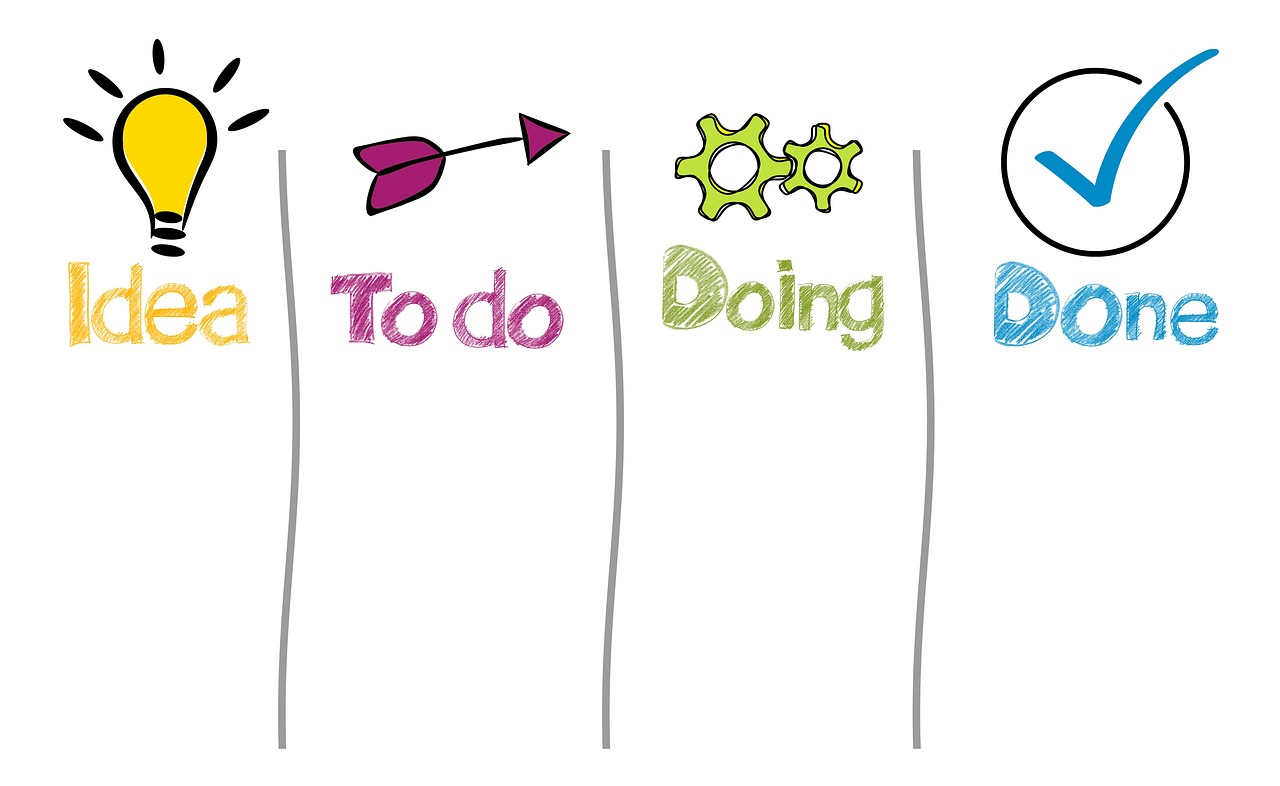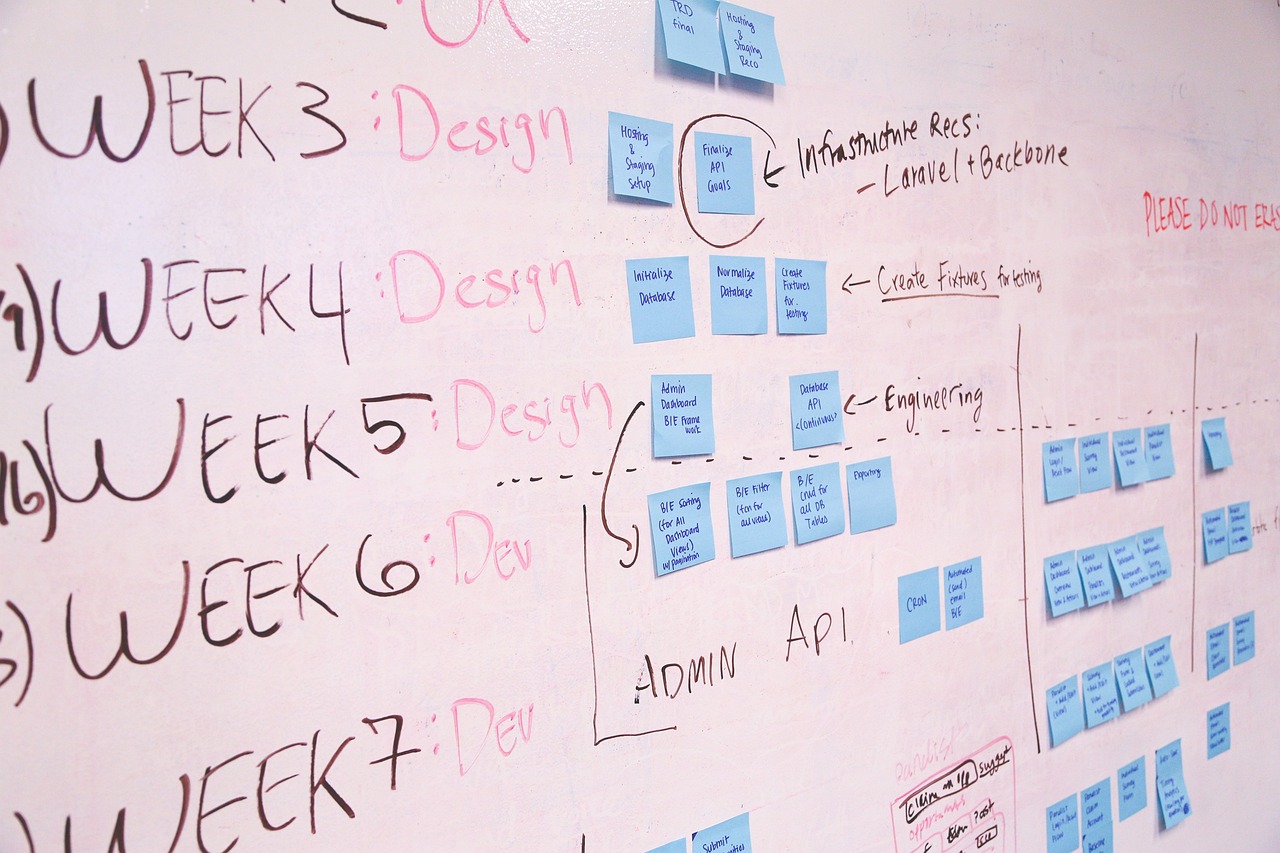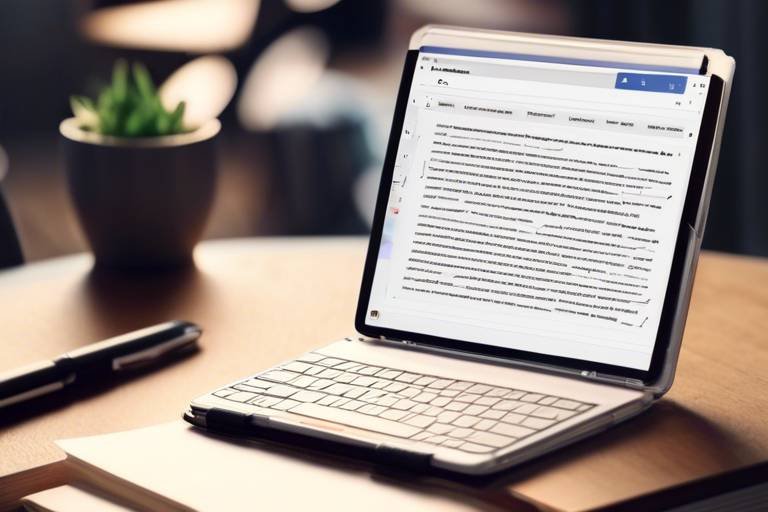Strategies for Managing Long-Term Projects Efficiently
Embarking on a long-term project can feel like setting sail on a vast ocean, with unpredictable waves and changing winds. To navigate this challenging journey successfully, one must equip themselves with a sturdy ship and a reliable compass. Similarly, when managing long-term projects, it is crucial to have clear goal setting as your compass, guiding you towards your destination. By setting specific, measurable, achievable, relevant, and time-bound goals, you establish a roadmap that provides a clear direction and focus throughout the project's lifecycle.
Efficient resource planning is akin to stocking your ship with ample provisions and ensuring your crew is well-prepared for the voyage ahead. Just as a captain carefully allocates resources such as budget, manpower, and materials to ensure a smooth sailing experience, project managers must also manage resources effectively to facilitate progress and timely completion of long-term projects.
Regular monitoring and evaluation act as the lighthouse guiding your ship through the darkness, providing a beacon of light to track progress and assess performance. Implementing a system for continuous monitoring and evaluating the project against set milestones and objectives allows for course corrections and adjustments to be made, ensuring that the project stays on track.
When sailing through uncharted waters, risk management becomes crucial to anticipate and navigate potential storms. Just as a skilled captain identifies risks, develops mitigation strategies, and prepares contingency plans for unexpected challenges, project managers must also be proactive in identifying risks, addressing them, and preparing for any unforeseen obstacles that may arise during the project.
Effective communication is the wind that fills your sails, propelling your project forward with momentum. Establishing clear channels of communication, fostering collaboration among team members, stakeholders, and clients ensures transparency and alignment towards project goals, creating a cohesive and efficient working environment.
Adaptability and flexibility are the sails that allow your ship to adjust to changing winds and tides. Being open to changes, adapting to unforeseen circumstances, and adjusting project plans as needed are essential skills that enable project managers to overcome obstacles and stay on course during the turbulent waters of long-term projects.
Team empowerment is the crew that works together seamlessly, each member contributing their expertise to ensure the success of the voyage. By delegating responsibilities, providing support, and fostering a collaborative environment, project managers empower their team members, enhancing productivity, motivation, and overall project success.
The utilization of technology is the navigation tools that guide your ship through complex waters, helping you steer towards success. Leveraging project management tools, software, and technology solutions streamlines processes, improves efficiency, and enhances communication, enabling project managers to effectively manage and coordinate long-term projects with ease.

Clear Goal Setting
Effective strategies and tips for successfully handling long-term projects to ensure efficiency and productivity throughout the project lifecycle.
Setting clear goals is the cornerstone of any successful long-term project. By establishing specific, measurable, achievable, relevant, and time-bound objectives, you provide a roadmap that guides every step of the project journey. Imagine goals as the North Star that keeps the project team aligned and focused, steering them towards success amidst the vast sea of tasks and challenges.
When setting goals, it's crucial to involve all stakeholders to ensure everyone is on the same page. By creating a shared vision and understanding of what needs to be achieved, you foster a sense of ownership and commitment among team members, driving motivation and engagement.
Moreover, clear goal setting helps in prioritizing tasks, making decisions, and allocating resources effectively. It enables you to measure progress, track accomplishments, and celebrate milestones, boosting morale and maintaining momentum throughout the project duration.
Picture a well-crafted goal as a beacon of light in the darkness, illuminating the path forward and guiding the project team through the twists and turns, ensuring they reach the destination with clarity and purpose.

Resource Planning
Resource planning is a critical aspect of managing long-term projects efficiently. It involves strategically allocating and managing various resources to ensure the smooth progress and timely completion of the project. One key element of resource planning is budget allocation. By carefully estimating the costs involved in different project phases and allocating the budget accordingly, project managers can prevent financial constraints and delays.
In addition to budget management, manpower allocation is another crucial component of resource planning. Assigning the right people with the necessary skills to specific tasks can significantly impact the project's success. By assessing the workload, skill sets, and availability of team members, project managers can optimize resource utilization and prevent bottlenecks.
Moreover, material resources play a vital role in long-term project management. From raw materials to equipment and tools, ensuring the availability of necessary resources at the right time is essential for project continuity. Effective resource planning involves forecasting material requirements, establishing reliable supply chains, and monitoring inventory levels to prevent shortages or excess stock.
Furthermore, resource planning extends beyond budget, manpower, and materials to include time management. Developing a realistic project timeline, setting milestones, and establishing deadlines are essential for tracking progress and ensuring project milestones are met on time. By effectively managing time as a critical resource, project managers can avoid delays and keep the project on schedule.
Collaboration and coordination among team members are essential for successful resource planning. By fostering a culture of teamwork, communication, and transparency, project managers can enhance resource allocation decisions, resolve conflicts, and maximize the efficiency of resource utilization. Regular meetings, progress updates, and feedback sessions can help streamline resource planning efforts and address any issues promptly.

Regular Monitoring and Evaluation
Effective strategies and tips for successfully handling long-term projects to ensure efficiency and productivity throughout the project lifecycle.
Regular monitoring and evaluation are crucial aspects of managing long-term projects efficiently. By implementing a system for continuous monitoring, project managers can track progress and evaluate performance against set milestones and objectives. This allows for timely identification of any deviations from the project plan, enabling proactive decision-making to keep the project on track.
Through regular monitoring, project managers can assess the effectiveness of strategies and make necessary adjustments to optimize project performance. Evaluation helps in identifying strengths and weaknesses, enabling teams to capitalize on successes and address areas that require improvement. It provides valuable insights into the project's progress, ensuring that it stays aligned with the overall goals and objectives.
Utilizing tools such as Gantt charts, progress reports, and key performance indicators (KPIs) can aid in monitoring and evaluating the project's progress effectively. These tools provide a visual representation of project timelines, milestones, and performance metrics, facilitating better decision-making and communication among team members.
Regular monitoring and evaluation not only enhance project transparency but also foster accountability among team members. By regularly assessing project performance, teams can identify potential bottlenecks, address issues promptly, and make informed decisions to drive the project towards successful completion.
Have questions about managing long-term projects efficiently? Check out some common queries below:
- How important is goal setting in long-term project management?
- What role does effective communication play in project success?
- How can technology aid in streamlining long-term project processes?
- Why is adaptability crucial in managing long-term projects?

Risk Management
Risk management is a crucial aspect of handling long-term projects efficiently. It involves identifying potential risks that may impact the project's progress and implementing strategies to mitigate them. By proactively addressing risks, project managers can minimize disruptions and ensure the successful completion of the project.
One key element of risk management is conducting a thorough risk assessment at the beginning of the project. This involves identifying all possible risks, analyzing their potential impact, and prioritizing them based on their likelihood and severity. By understanding the risks upfront, project teams can develop effective mitigation strategies to address them.
Creating contingency plans is another essential part of risk management. These plans outline alternative courses of action to be taken if a risk materializes. By having contingency plans in place, project teams can respond quickly and effectively to unforeseen challenges, minimizing the impact on the project's timeline and budget.
Regular monitoring and reassessment of risks throughout the project lifecycle are also critical. Risks are dynamic and can evolve as the project progresses. By continuously monitoring and evaluating risks, project managers can adapt their strategies and plans to address new threats that may arise.
Effective communication plays a vital role in risk management. Clear and transparent communication among team members, stakeholders, and other relevant parties can help identify risks early, facilitate timely decision-making, and ensure that everyone is aligned on risk mitigation strategies.
Lastly, risk management is not a one-time task but an ongoing process that requires constant attention and diligence. By integrating risk management practices into every phase of the project and fostering a risk-aware culture within the team, project managers can proactively address challenges and steer the project towards success.

Effective Communication
Long-term projects require careful planning and execution to ensure success. One crucial aspect of efficiently handling such projects is . Clear channels of communication are essential for fostering collaboration, ensuring transparency, and aligning all stakeholders towards the project goals.
By establishing open lines of communication among team members, stakeholders, and clients, project managers can facilitate the exchange of ideas, feedback, and updates. This not only enhances teamwork but also helps in resolving issues promptly and making informed decisions throughout the project lifecycle.
Effective communication involves not only conveying information but also actively listening to others' perspectives. It is about creating a supportive environment where everyone feels valued and encouraged to share their thoughts, concerns, and suggestions.
Moreover, utilizing communication tools and platforms can streamline interactions, facilitate quick decision-making, and ensure that all project-related information is easily accessible to everyone involved. Whether it's through regular meetings, emails, project management software, or instant messaging apps, maintaining open communication channels is key to project success.
Furthermore, clear and concise communication helps in avoiding misunderstandings, reducing conflicts, and enhancing overall project efficiency. When team members are on the same page and understand their roles and responsibilities clearly, they can work cohesively towards achieving project milestones.
In essence, effective communication acts as the glue that holds a long-term project together. It bridges gaps, resolves conflicts, and fosters a collaborative environment where everyone is aligned towards the common goal. By prioritizing communication and nurturing a culture of openness and transparency, project managers can navigate challenges, build strong relationships, and drive success in their long-term projects.

Adaptability and Flexibility
Adaptability and flexibility are key attributes required for successfully managing long-term projects. In the dynamic environment of project management, unexpected challenges and changes are inevitable. Therefore, project managers must be prepared to adapt to unforeseen circumstances and adjust project plans accordingly to ensure the project's success.
Imagine a long-term project as a ship sailing through unpredictable waters. Just as a skilled captain navigates through changing weather conditions and unforeseen obstacles, a project manager must steer the project towards its destination by being flexible and adaptable. Embracing change and being willing to modify strategies are essential to overcome hurdles and stay on course.
One effective way to foster adaptability and flexibility in long-term projects is by encouraging a culture of innovation and creativity within the project team. By promoting an environment where new ideas are welcomed and experimentation is encouraged, team members are more likely to adapt to challenges with innovative solutions.
Moreover, creating contingency plans and alternative approaches in advance can help mitigate the impact of unexpected events on the project timeline and deliverables. Anticipating potential risks and developing response strategies enable the project team to react promptly and effectively when faced with uncertainties.
Communication also plays a crucial role in promoting adaptability and flexibility in long-term projects. By maintaining open and transparent communication channels, team members can easily share updates, feedback, and concerns, allowing for quick adjustments and realignment of project tasks.
Remember, in the world of project management, adaptability and flexibility are not signs of weakness but strengths that empower project managers to navigate through challenges and lead their teams towards successful project completion.

Team Empowerment
Team empowerment is a crucial aspect of managing long-term projects efficiently. By empowering team members, project managers can foster a collaborative environment that enhances productivity and motivation throughout the project lifecycle. Delegating responsibilities effectively is key to distributing workload evenly and ensuring that each team member plays a significant role in the project's success. Providing necessary support, guidance, and resources to team members not only boosts their confidence but also equips them with the tools needed to overcome challenges and achieve project goals.

Utilization of Technology
Utilization of technology plays a crucial role in managing long-term projects efficiently. By leveraging project management tools, software, and technology solutions, project managers can streamline processes, improve efficiency, and enhance communication throughout the project lifecycle. These technological advancements provide a competitive edge by enabling teams to collaborate effectively, track progress in real-time, and make data-driven decisions.
One key aspect of technology utilization is the implementation of project management software, such as Trello, Asana, or Microsoft Project. These tools offer features like task assignment, progress tracking, and deadline reminders, allowing teams to stay organized and focused on project goals. Additionally, cloud-based solutions enable remote teams to work seamlessly together, ensuring continuity and productivity even in dispersed work environments.
Furthermore, communication tools like Slack, Microsoft Teams, or Zoom facilitate instant messaging, video conferencing, and file sharing, promoting real-time collaboration and quick decision-making. By utilizing these platforms, team members can communicate effectively, share updates, and address issues promptly, fostering a culture of transparency and accountability within the project team.
Moreover, the integration of data analytics tools and reporting software enables project managers to analyze performance metrics, identify bottlenecks, and make informed decisions to optimize project outcomes. By harnessing the power of data, teams can track key performance indicators, forecast trends, and proactively address potential risks, ensuring project success and stakeholder satisfaction.
Frequently Asked Questions
- What are the key elements of effective goal setting for long-term projects?
Effective goal setting for long-term projects involves setting specific, measurable, achievable, relevant, and time-bound (SMART) goals. These goals provide a clear direction and focus for the project, guiding the team towards successful completion.
- How important is resource planning in managing long-term projects?
Resource planning is crucial for the smooth progress and timely completion of long-term projects. Efficiently allocating and managing resources such as budget, manpower, and materials ensures that the project stays on track and meets its objectives.
- Why is regular monitoring and evaluation essential in project management?
Regular monitoring and evaluation help in tracking progress, identifying potential issues early on, and ensuring that the project stays aligned with its goals. It allows for necessary adjustments to be made to enhance efficiency and productivity.
- How does effective communication contribute to the success of long-term projects?
Effective communication fosters collaboration, ensures transparency, and aligns all stakeholders towards the common goals of the project. Clear channels of communication help in resolving conflicts, addressing issues promptly, and maintaining project momentum.
- What role does adaptability and flexibility play in managing long-term projects?
Adaptability and flexibility are essential in dealing with unforeseen challenges and changes that may arise during long-term projects. Being open to adjustments and willing to adapt plans when necessary ensures that the project remains resilient and on track.



















